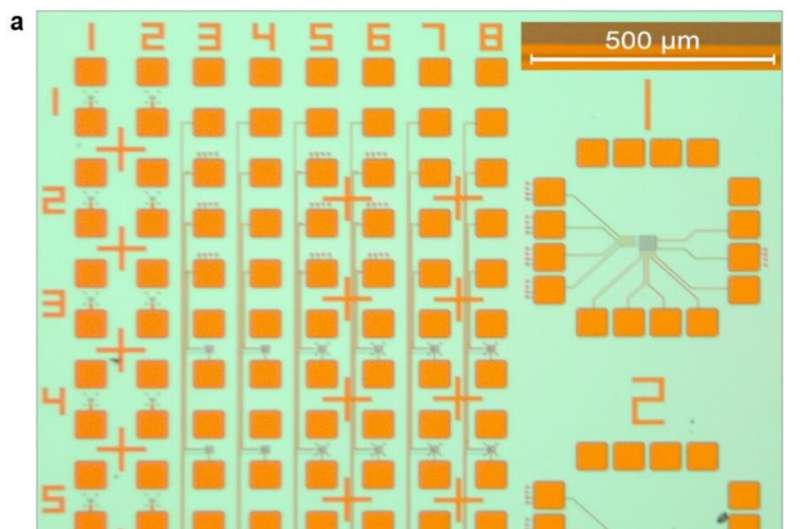This article has been reviewed according to Science X's editorial process and policies. Editors have highlighted the following attributes while ensuring the content's credibility:
fact-checked
trusted source
proofread
Scientists integrate two-dimensional materials into silicon microchips for advanced data storage and computation

Two-dimensional materials are expected to revolutionize the semiconductor industry. However, despite multiple studies that have reported prototype devices with promising properties for sensing and driving electrical current, their technology readiness level is still very low because they mostly use synthesis and processing methods that are incompatible with industry, create the large devices on unfunctional substrates, and present poor variability and yield.
A team of scientists at King Abdullah University of Science and Technology (KAUST) led by Dr. Mario Lanza, associate professor of materials science and engineering, has successfully integrated two-dimensional materials on silicon microchips, and achieved excellent integration density, electronic performance and yield. The study has been published in Nature.
"In the future, most microchips will exploit some of the many outstanding electronic and thermal properties of these materials," said Lanza.
Lanza's team used a two-dimensional insulating material called multilayer hexagonal boron nitride (about 6 nanometers thick), and employed microchips containing silicon transistors of complementary metal-oxide-semiconductor (CMOS) technology—a type of technology that is present in every electronic product we use such as phones, computers, automobiles, medical machines and household appliances.
The resulting hybrid 2D/CMOS microchips exhibit high durability and special electronic properties that enable the fabrication of artificial neural networks with very low power consumption. They can successfully compute spiking neural networks (electrical stresses applied during very short time periods), a key component of current artificial intelligence systems that are increasing in demand. Most current devices are not suitable for implementing this type of neural network, and there is a market need to find new approaches.
The research has attracted the interest of several semiconductor companies, and could help other companies reduce processing costs and energy. Most companies in the field of microchip manufacturing and artificial intelligence are aiming to create new hardware that reduces data processing time and energy consumption but have not yet found a suitable device.
IBM has attempted to integrate graphene into transistors for radio-frequency applications, but the devices were not able to store or process information. In contrast, the devices created by Professor Lanza's team measure only 260 nanometers and could be made much smaller very easily if more advanced microchips were available.
This work is exciting for the field of nanoelectronics and semiconductors because of the high performance of the devices and circuits produced and the potential for far-reaching industry applications.
More information: Kaichen Zhu et al, Hybrid 2D/CMOS microchips for memristive applications, Nature (2023). DOI: 10.1038/s41586-023-05973-1















